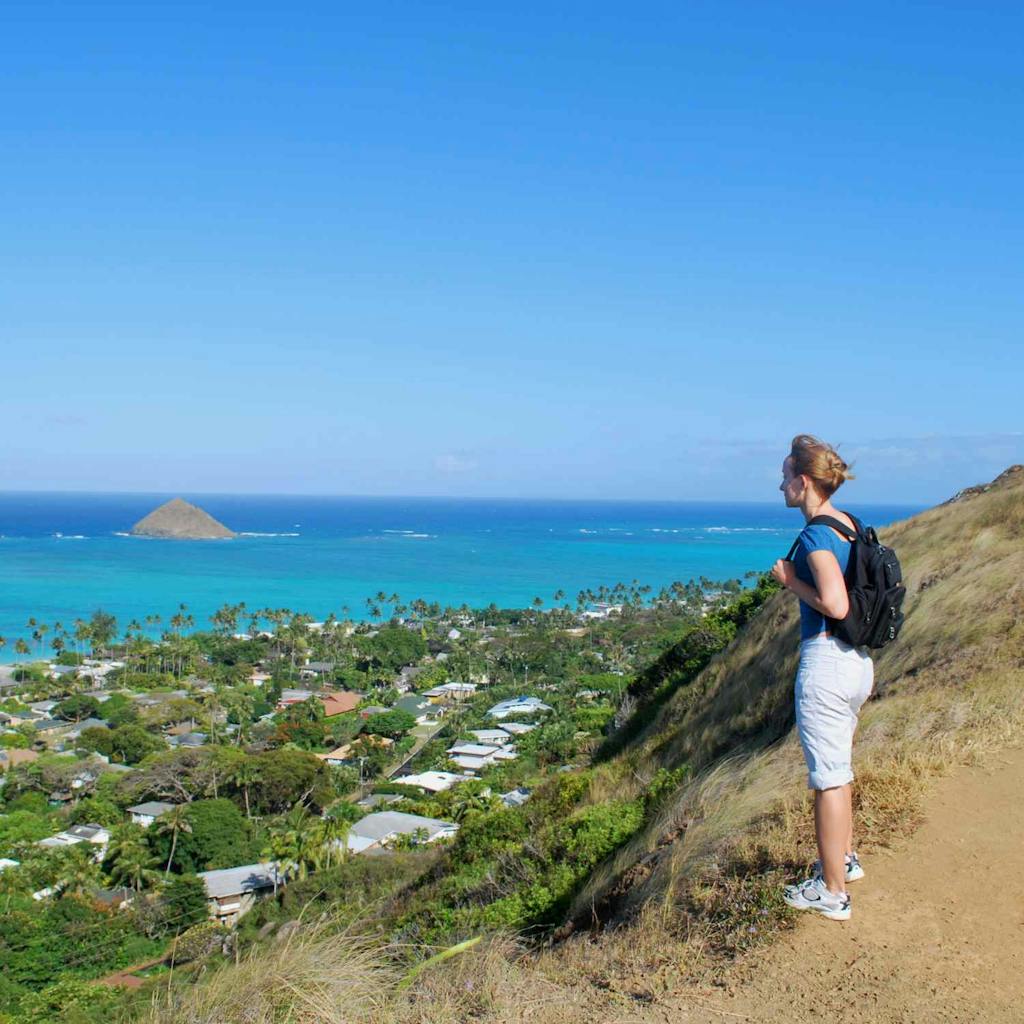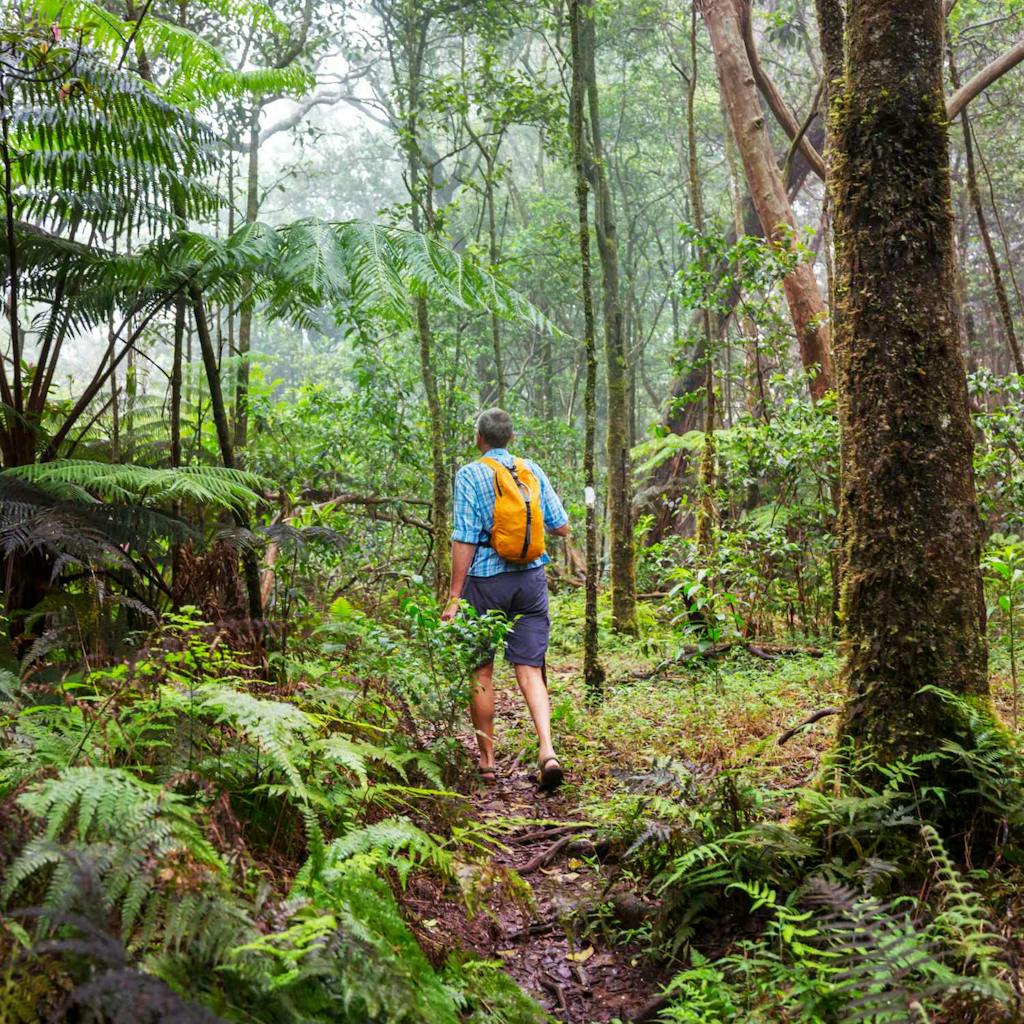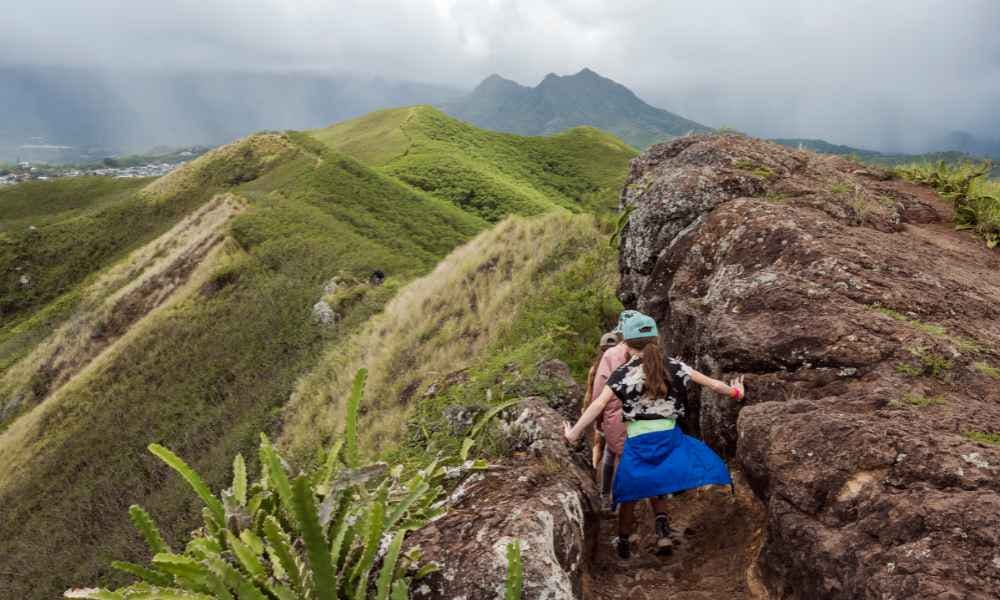Hiking in Hawaii can be great exercise and a unique way to see the islands’ beauty. But it can also be dangerous, especially on difficult trails, in extreme weather, or when you’re unprepared.
But that shouldn’t deter you from making these treks. Instead, follow along as we outline our favorite tips and resources for hiking in Hawaii. Trust us, you’ll want to take extra precautions, even if you’re an experienced hiker.
Hawaii Hikes Vs. Other Destinations
I am an avid hiker. My husband and I have been known to plan our vacations around hikes that we want to do, whether it’s somewhere in Hawaii, on the mainland, or even abroad.
There is no greater feeling than reaching the end of a hike with a beautiful lookout point. However, I have noticed a stark difference between hiking in Hawaii and hiking on the mainland.
For starters, hikes in Hawaii can be a bit more dangerous than other hikes. While some hikes are state-maintained, other trails are not sanctioned. Some are even illegal, like the famous Stairway to Heaven (which I haven’t done and don’t recommend!).
Rescues here are common, since visitors often get into trouble when they’re unprepared for hikes or cross into dangerous areas. Sometimes, they didn’t know what they were getting into or simply didn’t understand their limits.
If you are interested in hiking in Hawaii, I thought I would help you get started. I created this Hiking 101 Guide, something that you can refer to as you decide what kind of hike you want to try. Read on to learn more!
Preparing for Your Hike
I think that it’s essential to know what you are getting into when you go hiking. I like to know how long the trail is and how much time I should allow for it.
Because it’s so hot in Hawaii and because of changing conditions like rain and wind, people often underestimate how strenuous hikes can be.
Many popular hikes, like Diamond Head, the Makapuu Lighthouse Trail, and Waimea Falls, are ideal for visitors and first-time hikers because they are pretty short.
Others, like Koko Head, are more exerting and challenging.
But how do you know which ones are right for you? Do some research. Our blog is a great resource for learning about the different hiking options in Hawaii.
I have been writing detailed guides to these hikes, so take your time reviewing all of them. I try to give as many details about the hikes as possible in my posts. Is there shade? Are there bathrooms? Are there bugs? Is it slippery? Is it paved or challenging to walk on? Are there stream crossings? I will let you know in these guides.
Know your skill level and look for a hike that is at your skill level.
In addition, the conditions of the trails in Hawaii can change depending on the weather and rain. Be mindful of Hawaii’s microclimates – it could be sunny at your hotel but pouring rain at your hike.
Ventusky is a good resource for specific weather conditions, but there’s no replacement for your eyes and ears. Be aware before you enter any hike. If it looks like it might rain, find a different trail. Or else you risk encountering flash floods, slick trails, and falling limbs.
I cannot emphasize enough the importance of research before you leave for your hike. If you want more information about a hike, the travel experts at Hawaii Aloha Travel are a great place to start! We can help you determine which hikes are best for you based on your skills and desires.

What to Wear When Hiking in Hawaii
In Hawaii, it’s usually warm, so you don’t need to worry about wearing jackets or layers. I do like to wear leggings because they protect my legs from the sun and from getting scraped up on stray branches or when I fall.
All you need to wear is a tank top or T-shirt (the T-shirt will give you more protection from the sun), shorts or leggings, and hiking boots. Sneakers can be okay on paved trails, but if you do the more challenging hikes, I highly recommend investing in a pair of hiking boots.
Avoid wearing jeans, flip-flops, or shoes without traction. Make sure the fabric that you are wearing is breathable.
What to Bring
Once you have done your research, it’s time to pack! The equipment you need varies depending on the hike’s weather, length, and difficulty. I always recommend putting everything in a backpack because that makes it a lot easier to carry your belongings while hiking. You want your hands free.
In the backpack, I always bring water, sunscreen, sunglasses, hand sanitizer, a snack (protein bar or trail mix), napkins, lip balm with SPF, and my cell phone (100% charged).
There are many other items to consider bringing. Depending on the length of the hike, you might also want to bring:
- Hat
- Bug spray (essential for hikes in forests)
- A printed map. You don’t want to rely on the Internet because you might lose service. If you can’t print a map, screenshot the map of the trail, as well as directions back to your hotel. Service is spotty on the trails, but at least you will have the photos you saved.
- First aid kit.
- Ziplock bag for trash. Never leave any garbage on the trails.
- Flashlight
- Rain jacket
- Pocket knife
- Whistle
- Hiking Hip Packs

Best Advice for Hiking in Hawaii
When you are planning your hike, there are a lot of important factors to consider. Here are the top “rules” to follow as you head out on your journey:
Follow All Signs
Read posted warning signs and follow the directions they offer.
Bring a Buddy
Always hike with someone, no matter what trail it is or how short it is. It is also a good idea to tell someone not going with you where you plan to go. Remember to tell them when you finish so that they don’t worry!
If In Doubt, Don’t Go Out (When Surfing or Hiking in Hawaii)
If the weather is bad, do not go. I know that you want to fit everything into your visit to Hawaii. I know that you will be bummed if it’s raining hard on the day you set aside to hike Koko Head. But it’s simply not worth it. Mudslides, heavy rain, and flash floods can cause dangerous conditions.
Stay on the Trails
Never go off of the marked trail. Shortcuts can be tempting, and I love exploring, but it’s essential that you stay on the marked trails. There are a few reasons for this.
First, if you go off the trail, it could be dangerous. There could be loose ground that you could fall off of. Also, walking off the trail could damage some of the trails and the wildlife.
Stay Aware
Keep track of the time. Know when the sun is going to set. If a trail is taking you longer than you expected and it’s starting to get late, it’s better to turn around than to be out hiking in the dark.
Use Common Sense
If something looks dangerous or you have a bad feeling about it, turn around. If you feel like you have veered off the trail, turn around. No hike is worth risking your life.
Dangers to Be Aware of
Now, I don’t tell you these dangers to scare you away from hiking in Hawaii. After all, I hike almost every weekend! But it’s important to understand your environment and to be aware of the dangers unique to Hawaii before you go out on the trails. You may never have hiked anywhere like this before.
I want you to come to Hawaii fully prepared so that you can safely enjoy everything these beautiful islands have to offer.
Wild Animals (And Their Hunters)
Understand the terrain and environment in Hawaii. Although Hawaii doesn’t have snakes or bears, we do have wild pigs. They might not seem dangerous, but it’s essential to stay away from them. And where there are wild pigs, there might also be hunters. Wearing brightly colored clothing will help hunters see you from a distance.
Testing the Ropes
Many hikes in Hawaii also have ropes to help you out. Relying on ropes can be dangerous because you never know if they are weathered. Test out the ropes before you use them.
Stream Crossings
Many hikes also have stream crossings. Just be careful when you cross the streams. If it starts to rain suddenly, there could be flash flooding, which can be very dangerous if you are trying to cross a stream.
Leptospirosis is a bacteria that can live in Hawaii’s freshwater and mud. Swimming or wading in freshwater streams can give you leptospirosis. So, don’t swim in freshwater waterfalls, even if you see other people doing it. If you have a cut on your foot or leg, you might want to avoid hikes that have stream crossings.
Hiking in Hawaii: Slowing Down and Taking it All in
If you want to have the best time possible while hiking in Hawaii, I recommend taking time to slow down and enjoy it! Stop along the way to sit down and have a drink of water and a snack. Don’t be so focused on your destination that you forget to enjoy the journey.
And when you get to the top of that mountain, take the time to enjoy the view from the top! There is no need to rush back down.What hikes are you looking forward to doing in Hawaii? Let us know when you connect with Hawaii Aloha Travel for your expert-planned vacation.




